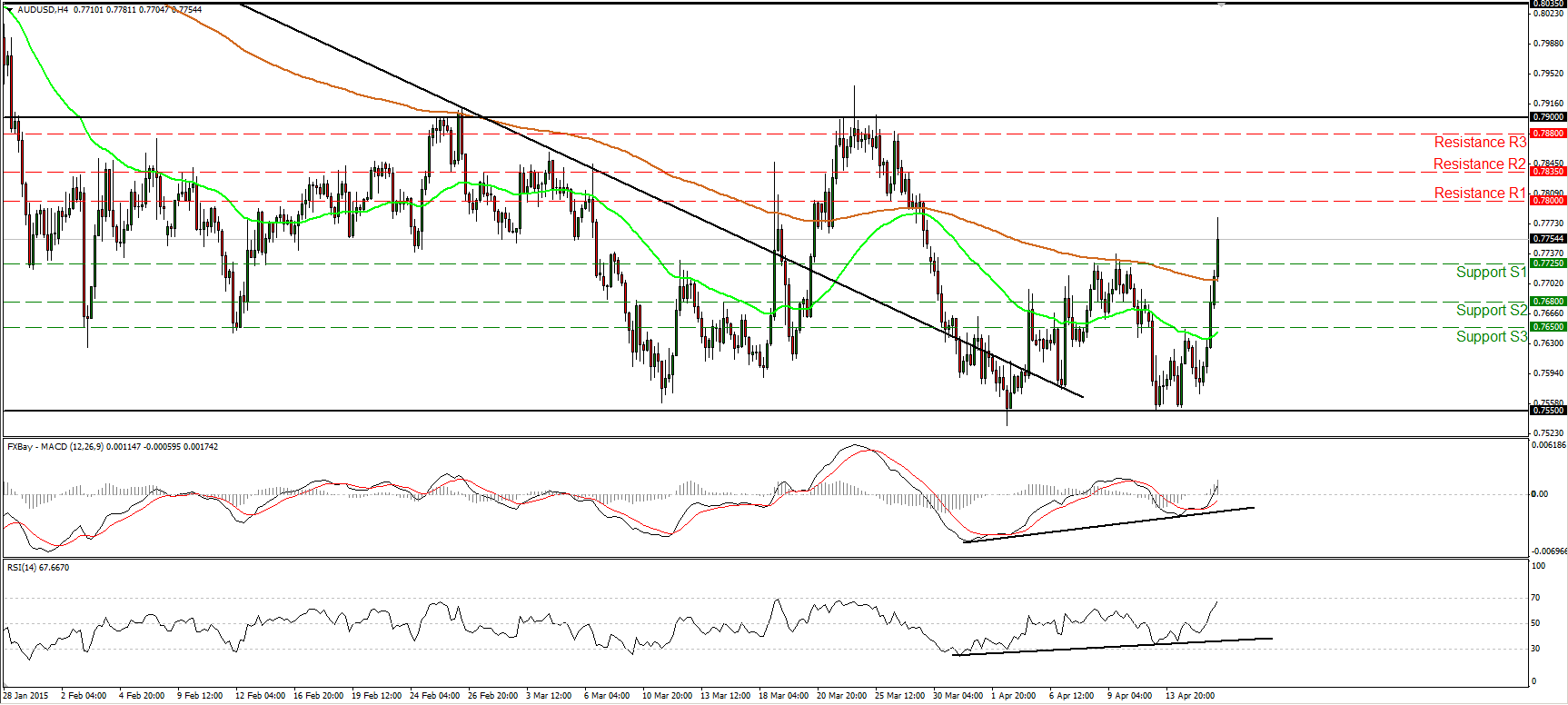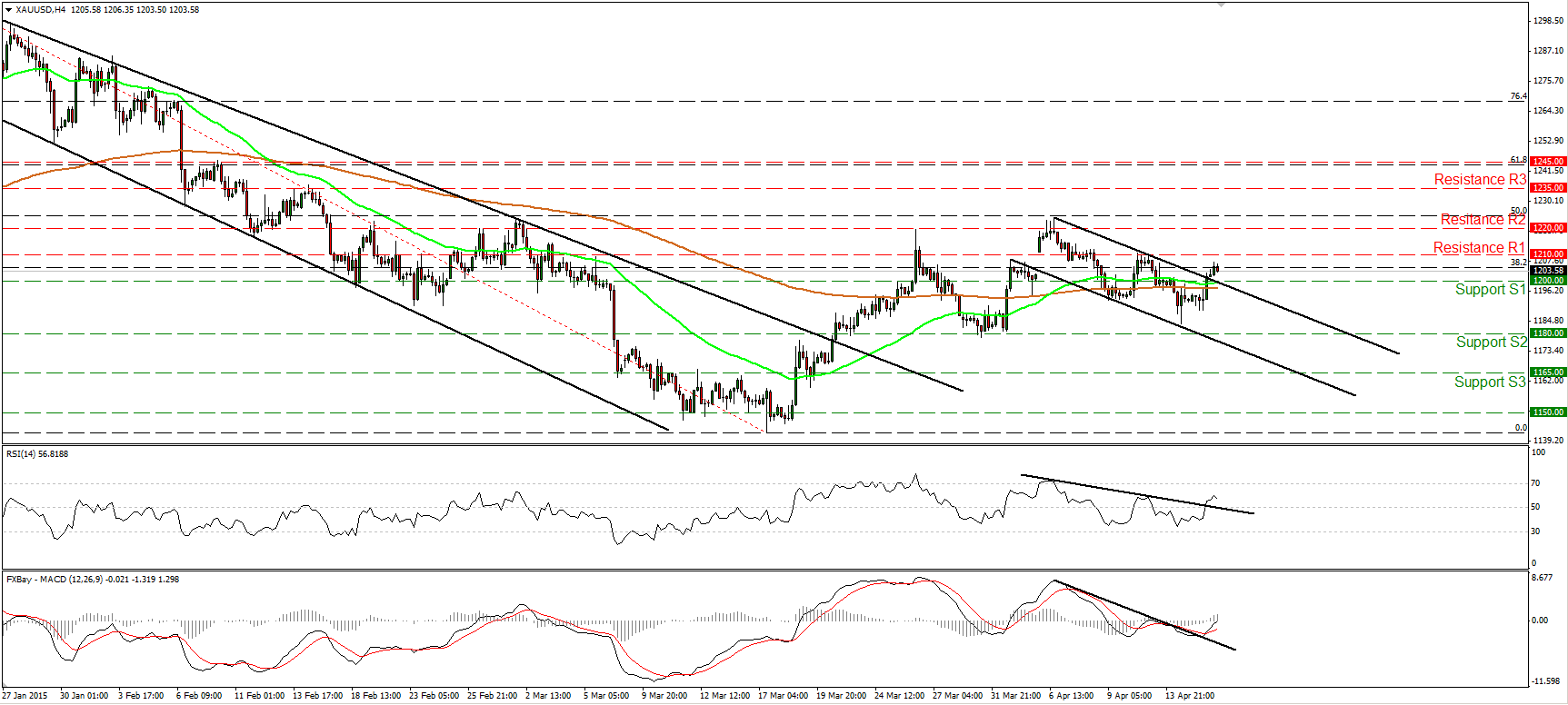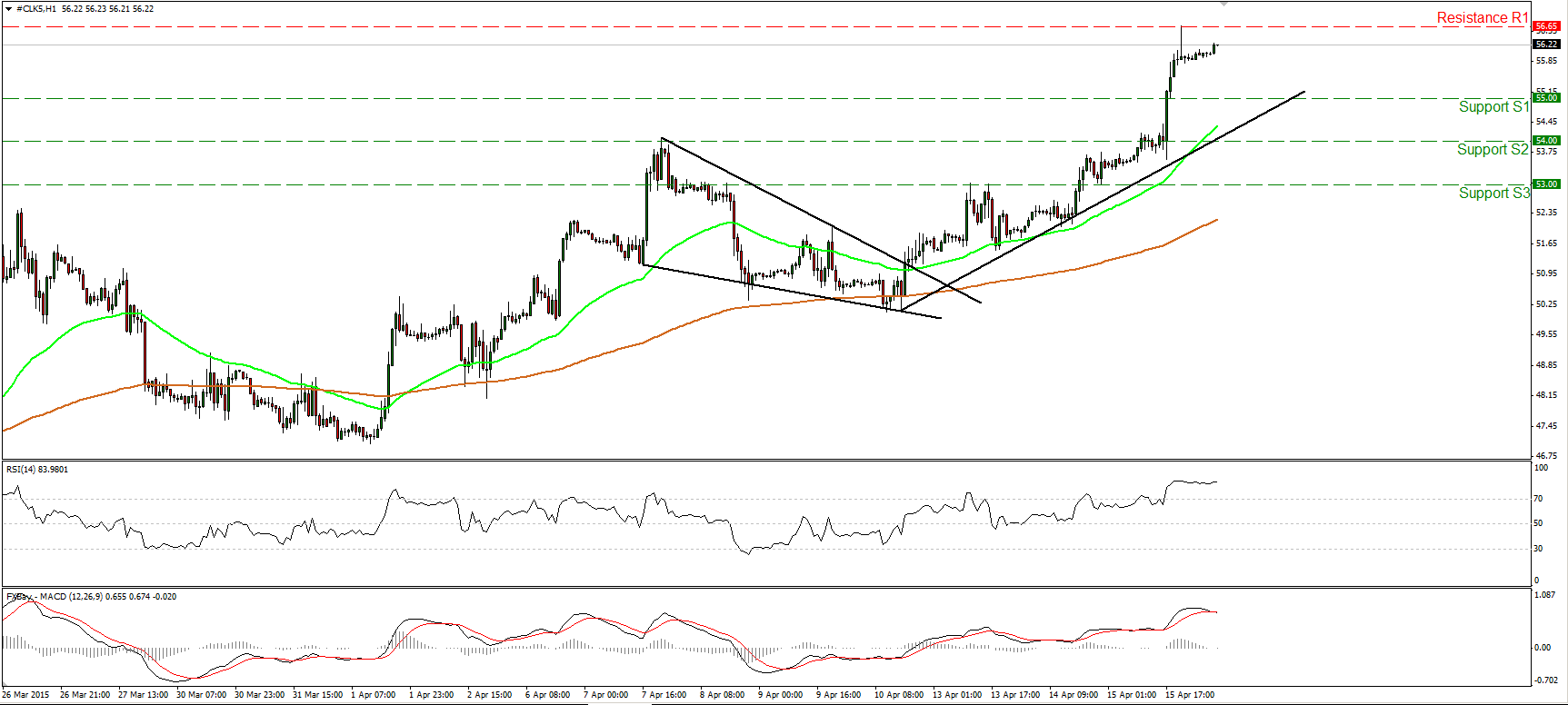BoC standing pat doesn't mean the end of the USD rising cycle ECB President Draghi was about as dovish as he could be yesterday. He brushed aside concerns that the Bank’s QE program might taper down or even end earlier than expected. No, the ECB wasn’t having problems finding paper to buy and no, it wasn’t considering reducing its purchases. It would keep them going at the same pace at least until the scheduled ending date of Sep. 2016 and maybe even longer if necessary. The only thing he might have done but didn’t was to lower the deposit rate, currently -0.2%, so that the ECB could buy paper trading at even deeper negative yields. He didn’t say anything about the euro, but his comments that real interest rates might go lower because the ECB would tolerate a move higher in inflation left no doubt that he is not concerned about the level of the currency. I expect that EUR/USD can move to parity and below without any official resistance.
BoC very confident = follows Singapore in not tightening In contrast, the Bank of Canada was in a relatively confident mood about the outlook. “Underneath the effects of the oil price shock, the natural sequence of stronger non-energy exports, increasing investment, and improving labour markets is progressing…the anticipated recovery in growth means that the output gap will be back in line with its previous trajectory later this year.” That means much less need, if any, for further loosening this year. CAD soared as a result and, with the further rise in oil prices, is likely to continue to rise for some time.
Does this mean the end of the USD rising cycle? No! So Canada joins the Monetary Authority of Singapore, which Tuesday kept its monetary policy unchanged, following Australia and India (both on Apr. 7th). Is this the end of the global rate cutting frenzy, which has seen 47 countries (counting the Eurozone as 19 countries) cut rates so far this year? It could at least mean a slowdown in the rate-cutting trend, as oil prices are now some 25% off their lows of just a month ago. Nonetheless, it doesn’t mean the dollar is likely to decline. The monetary policy divergence still exists, just not as aggressively as before. For example, overnight Richmond Fed President Lacker, a voting member of the FOMC, said he saw “a strong case” that rates “should be higher right now.” (Lacker is a known hawk who said on April 10th that he favors hiking rates in June, the earliest date they could do it.) In the last two major US Dollar upcycles, the dollar didn’t peak until after US interest rates peaked, and so far short-term US rates haven’t even started to rise, while 10-year yields are still far below where they were even a year ago. I believe the dollar is still in the early stages of its upcycle. It has much much further to go, in my view.
Oil prices soar on smaller-than-expected rise in inventories Even though there were two central bank meetings, it was the oil market that dominated market attention as US inventories rose a much smaller-than-expected 1.3mn barrels in the latest reporting week. This compares with an average of 6.9mn barrels a week YTD before the figure. Moreover, US production fell slightly (-20k b/d). The figures raised hopes that the oil glut in the US is coming to an end as the number of oil rigs in use falls 53% in six months and the market is settling more into balance. Personally I doubt it and still anticipate a surge in production in June, but technically the market seems to be switching direction (see technical section below) and so I would expect to see further temporary gains by the oil-related currencies – NOK and CAD especially – in the next few days.
Australian unemployment falls more than expected Australia’s unemployment unexpectedly fell in March to 6.1% from 6.3% despite a rise in the participation rate while both part- and full-time employment rose more than expected. The news takes some pressure off the RBA to loosen rates and AUD rose sharply to be the 2nd best-performing G10 currency over the last 24 hours, after NOK. AUD was probably boosted too by the fact that Shanghai stocks were up 1.8%, more than erasing yesterday’s 1.2% fall on weak Q1 GDP and weaker-than-expected March industrial production. AUD too may be in for a temporary reversal of its recent downtrend, but I don’t think the situation in China is really likely to turn around so quickly and therefore I remain bearish on AUD over the medium term.
Today’s highlights: During the rest of the day we get data only from the US. Housing starts for March are forecast to return to above 1mn, indicating that February’s decline was probably due to the harsh winter. However building permits, the more forward-looking of the two indicators, are forecast have declined a bit. Nonetheless, the overall trend is consistent with an improving housing market, as indicated by yesterday’s higher-than-expected National Association of Homebuilders (NAHB) index and the rise in mortgage applications over the last several weeks. This could keep the greenback somewhat supported. Initial jobless claims for the week ended on April 11th are expected to come more or less unchanged from the previous week at a relatively low 280k. This would bring the 4-week moving average down to 279k from 282k. This is the week used for the nonfarm payrolls survey and so is likely to support the view that the poor March nonfarm payrolls were an anomaly caused by the weather and we are likely to see better employment data for April, which will help to convince the doubters on the FOMC (and the market). The Philadelphia Fed business activity index for March is forecast to increase a bit.
We have one ECB speaker and four Fed speakers on Thursday’s agenda. During the European day, ECB Vice President Vitor Constancio speaks, while during the US day Fed Vice Chairman Stanley Fischer, Atlanta Fed President Dennis Lockhart, Boston Fed President Rosengren and Cleveland Fed President Loretta Mester speak.
The Market
EUR/USD shoots up after Draghi’s remarks
EUR/USD climbed higher yesterday as ECB President Mario Draghi said that easing initiative has contributed to a further improvement in euro area’s economic outlook. The rate printed a higher low at around 1.0575 (S1) and rallied to print a higher high at around 1.0735 (R1). Having this price development in mind, I would switch my view on the short-term picture cautiously to the upside. This is also supported by our short-term oscillators as well. The RSI edged above its 50 line, while the MACD, already above its signal, is getting closer to its zero line and could obtain a positive sign soon. However, given our proximity to the upper bound of a possible upside channel, I would be careful that a pullback could be in the works. In the bigger picture, EUR/USD is still trading below both the 50- and the 200-day moving averages. Therefore, I would treat any possible near-term advances as corrective moves of the larger downtrend. A clear close below 1.0460 (S3) will confirm a forthcoming lower low and trigger the resumption of the larger downtrend.
• Support: 1.0575 (S1), 1.0500 (S2), 1.0460 (S3).
• Resistance: 1.0735 (R1), 1.0800 (R2), 1.0890 (R3).
USD/JPY hits support at 118.80
USD/JPY traded lower yesterday, but the decline was halted at 118.80 (S1), slightly below the lower line of an upward sloping channel that had been containing the price action since the 26th of March. Subsequently the rate rebounded back within the channel. I believe that the short-term bias is to the upside and I would expect the bulls to challenge the resistance zone of 119.65 (R1). A break above that barrier could target the psychological barrier of 120.00 (R2). On the daily chart, the rate is trading below the 50-day moving average, but well above the 200-day one, also above the upper line of the triangle formation that had been containing the price action since November. This keeps the overall uptrend intact, but given that there is still negative divergence between the daily oscillators and the price action, I would prefer to stand aside for now as far as the overall picture is concerned.
• Support: 118.80 (S1), 118.35 (S2), 118.00 (S3).
• Resistance: 119.65 (R1), 120.00 (R2), 120.80 (R3).
AUD/USD rallies on Australia’s better-than-expected job data
AUD/USD shot up during the Asian morning Thursday, after Australia’s unemployment rate unexpectedly fell to 6.1% in March from 6.3% the preceding month. The break above 0.7725 (S1) signaled the completion of a double bottom in my view and confirmed the positive divergence between our short-term oscillators and the price action. I believe that this shifts the short-term bias to the upside and amplifies the case that we are likely to experience a test at 0.7800 (R1) any time soon. A break above here could challenge our next resistance at 0.7835 (R2). Although I believe we are likely to experience further upside extensions in the near term, I maintain my neutral view as far as the overall outlook is concerned. First, the rate has been oscillating between 0.7550 and 0.7900 since the end of January, and second, there is still positive divergence between our daily momentum indicators and the price action.
• Support: 0.7725 (S1), 0.7680 (S2), 0.7650 (S3).
• Resistance: 0.7800 (R1), 0.7835 (R2), 0.7880 (R3).
Gold breaks above the upper bound of a downside channel
Gold traded higher on Wednesday, breaking above the upper bound of a near-term downside channel, and above the 1200 (S1) barrier. Although our momentum studies have turned positive, gold would have to overcome the 1210 (R1) hurdle to confirm a forthcoming higher high and perhaps turn the short-term outlook somewhat positive. For now, I prefer to take the sidelines. On the daily chart, the price is still trading below the 50% retracement level of the 22nd of January - 17th of March decline. This still makes me believe that the 17th of March – 06th of April recovery was just a corrective move. However, I would prefer to see a clear close below 1180 (S2) to get confident on the downside again.
• Support: 1200 (S1), 1180 (S2), 1165 (S3).
• Resistance: 1210 (R1), 1220 (R2), 1235 (R3).
WTI breaks above 55.00
WTI accelerated higher on Wednesday, after the US Energy Information Administration said that US crude oil inventories rose by less than expected in the week ended on April 10th. WTI surged and broke above the key resistance (now turned into support) barrier of 55.00 (S1), but the advance was halted at 56.65 (R1). A break above that line could extend the bullish wave towards 57.60 (R2), a resistance marked by the peak of the 23rd of December. Our daily oscillators detect accelerating bullish momentum and support the notion. The 14-day RSI continues higher and is getting closer to its 70 line, while the daily MACD lies above both its trigger and zero lines, pointing north. In my opinion, the break above 55.00 (S1), signalled the completion of a double bottom formation on the daily chart, something that could carry larger bullish implications.
• Support: 55.00 (S1), 54.00 (S2), 53.00 (S3).
• Resistance: 56.65 (R1) 57.60 (R2), 58.55 (R3).








